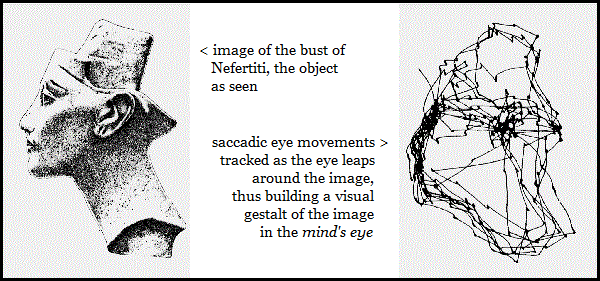Ideal as cause, real as effect
[ by Charles Cameron — a pretty intense little cognitive romp, b’day surprise #2 ]
.
mapping object seen to eye movement, Yarbus via MIT
**
Today I was reading James Harkin, How the Islamic State Was Won, in Harper’s from November last year, and this sentence struck me:
The aim was to wipe out the regime’s armed opponents, but the result was to destroy the country’s social fabric and displace whole communities — leaving millions of Syrians with little to lose. Groups like the Nusra Front took control of towns across the north, and foreign jihadis flooded into Syria to join the fight.
Here’s the thought it prompted:
The aim, purpose, or target of an action will often represent some sort of ideal, and that ideal becomes the cause of the action in question. Like all ideals, it represents a trajectory in a model space, that of the imagination, which like all models, lacks some of the details of the reality it purports to represent. Not only is the map not the territory, it will in all cases not envisioned by Jorge Luis Borges be smaller and less informed than the reality.
The result of that action, its effect, takes place in reality, even thought we then cognize it in a mental comparison with its aim or cause.
Unintended consequences, then, are quasi-mappable as arising in precisely those areas of the real which the ideal fails to map.
Mapping the distinctions between reality and unconscious perception, conscious perception, neural activity, and verbal, visual and matghematical models in mind, brain, and on a napkin or computer is, accordingly, one of the great tasks of the age.
**
Duchamp (image) and Ithkuil (verbal description) via John Quijada, see Birthday surprise




November 28th, 2015 at 10:11 pm
Relevant
.